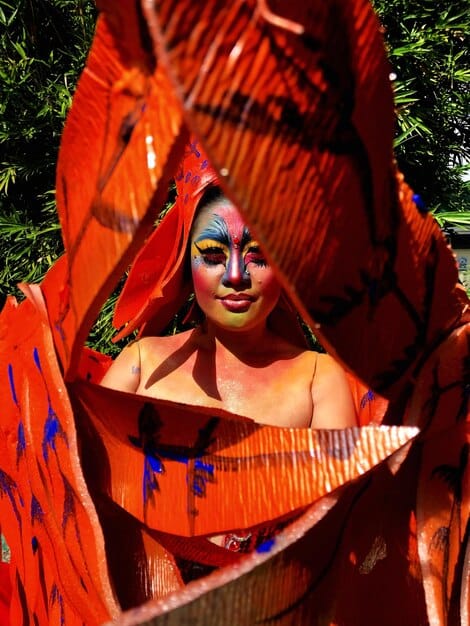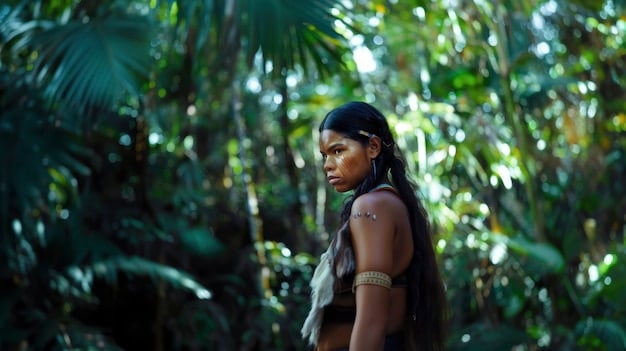Brazilian Culture in Global Cinema: A Spoiler-Free Guide

Spoiler-Free Guide: The Influence of Brazilian Culture on Global Cinema showcases how Brazil’s vibrant traditions, music, and social narratives have enriched and diversified cinematic storytelling worldwide.
The vibrant tapestry of Brazilian culture has long been a source of inspiration for artists around the globe. In this
Spoiler-Free Guide: The Influence of Brazilian Culture on Global Cinema, we’ll explore how Brazilian music, art, social narratives, and traditions have woven their way into international film, leaving an indelible mark on the world of cinematic storytelling.
The Roots of Brazilian Culture in Cinema
Brazilian cinema is more than just movies; it’s a reflection of the country’s deep-rooted culture and history. From the early days of silent films to the contemporary wave of internationally acclaimed productions, Brazilian culture has provided rich material for filmmakers.
Let’s delve into how this vibrant culture has not only shaped domestic cinema but has also resonated on a global scale.
Early Influences and the Birth of Brazilian Cinema
The advent of cinema in Brazil was heavily influenced by European and American trends, but it didn’t take long for local elements to emerge, showcasing the unique Brazilian identity.
The Cinema Novo Movement
Cinema Novo was a pivotal point, addressing social and political issues with a raw and unflinching gaze.
- Social Commentary: Films like “Black God, White Devil” explored the stark realities of poverty and inequality in Brazil.
- Political Activism: Directors used cinema as a tool to critique the government and advocate for social change.
- Aesthetic Innovation: The movement redefined cinematic language with its gritty realism and experimental techniques.
The Cinema Novo movement cemented Brazil’s place on the global cinematic map, proving that films could be both artistic and politically charged.
The roots of Brazilian culture in cinema showcase its cultural depth and artistic evolution, setting the stage for its global influence.
Brazilian Music and Dance on the Silver Screen
Music and dance are integral components of Brazilian culture, and they’ve significantly enriched cinematic experiences worldwide. From the infectious rhythms of samba to the captivating movements of capoeira, these art forms bring an undeniable energy to the silver screen.
Discover how these elements enhance storytelling and offer a glimpse into Brazil’s soul.

Samba’s Global Appeal
Samba, with its pulsating beats and exuberant dance, has transcended its Brazilian origins to become a global phenomenon. Its representation in films captures its celebratory spirit and its deep connection to Brazilian identity.
Capoeira: Martial Art Meets Dance
Capoeira, a unique Afro-Brazilian martial art that blends combat, dance, and music, has also made its mark in international cinema. Its acrobatic movements and cultural significance make it a captivating element in action and drama films.
- Action Sequences: Capoeira adds a dynamic and visually stunning element to fight scenes.
- Cultural Representation: Films featuring capoeira often explore themes of resistance, freedom, and cultural pride.
- Artistic Expression: The graceful movements of capoeira bring an artistic touch to cinematic narratives.
The integration of Brazilian music and dance into global cinema enriches narratives and celebrates Brazil’s dynamic cultural identity.
Brazilian Social Narratives in International Films
Brazilian social narratives, characterized by their raw authenticity and compelling stories of resilience, have increasingly found their way into international films. These narratives often tackle complex issues such as poverty, inequality, and social justice, offering a window into the realities of Brazilian life.
Let’s explore how these stories resonate with global audiences and contribute to broader social dialogues.
Favela Stories: Beyond Stereotypes
The favelas of Brazil, often portrayed in a sensationalized manner, have also been the subject of more nuanced and empathetic cinematic portrayals. These films delve into the lives of favela residents, exploring their struggles, dreams, and the strong sense of community that prevails despite challenging circumstances.
Environmental Themes and Indigenous Voices
Brazil’s rich biodiversity and the plight of its indigenous communities have also gained attention in international cinema. Documentaries and fictional films alike explore environmental issues, the impact of deforestation, and the struggles of indigenous people to preserve their culture and land.

- Environmental Awareness: These films raise awareness about the importance of conservation and sustainable practices.
- Indigenous Representation: They provide a platform for indigenous voices, allowing them to share their perspectives and stories.
- Cultural Preservation: The films highlight the importance of preserving indigenous cultures and traditions.
By incorporating Brazilian social narratives, international films offer deeper insights into the human condition and promote cross-cultural understanding.
International films gain authenticity and depth by incorporating Brazilian social narratives, challenging stereotypes and promoting understanding.
Brazilian Actors and Filmmakers Making a Global Impact
Brazilian actors and filmmakers are increasingly making a significant impact on the global stage. Their talent, unique perspectives, and commitment to storytelling have earned them critical acclaim and a growing international audience.
Discover the individuals who are shaping the future of cinema and bringing Brazilian stories to the world.
Pioneering Brazilian Actors in Hollywood
Several Brazilian actors have broken into Hollywood, showcasing their versatility and captivating performances in a variety of roles. They bring a unique flair to international productions, enriching the diversity of on-screen talent.
Brazilian Directors Shaping Global Cinema
Brazilian directors are also making waves in global cinema, bringing their distinctive filmmaking style and storytelling prowess to international projects. Their films often explore universal themes through a Brazilian lens, offering fresh perspectives and innovative approaches to filmmaking.
- Diverse Storytelling: Brazilian directors bring a range of stories to the screen, from intimate character studies to epic historical dramas.
- Artistic Innovation: They are known for their experimental techniques and willingness to push the boundaries of cinematic expression.
- Cultural Exchange: Their work fosters cultural exchange and promotes a deeper understanding of Brazilian culture.
The contributions of Brazilian actors and filmmakers are enriching the global film industry and paving the way for future generations of talent.
Brazilian actors and filmmakers are carving out a place in global cinema, enriching the industry with their talent and unique perspectives.
Brazilian Themes in Animated Films
Brazilian culture has permeated animated films, bringing vibrant colors, lively music, and compelling stories to a younger audience. These films often introduce children to Brazilian traditions, folklore, and the importance of cultural preservation.
Explore how Brazilian themes enrich animated narratives and promote cultural awareness.
“Rio”: A Celebration of Brazilian Culture
“Rio,” a popular animated film set in Rio de Janeiro, is a vibrant celebration of Brazilian culture. The film showcases the city’s iconic landmarks, the exuberance of Carnival, and the rich biodiversity of the rainforest.
Incorporating Brazilian Folklore
Animated films are also drawing inspiration from Brazilian folklore, bringing to life mythical creatures and traditional stories. These films introduce children to the rich cultural heritage of Brazil and promote a sense of pride in their roots.
- Cultural Education: Animated films provide an engaging and accessible way for children to learn about Brazilian culture.
- Visual Storytelling: The vibrant colors and detailed animation bring Brazilian landscapes and traditions to life.
- Universal Themes: These films often explore universal themes such as friendship, family, and environmental stewardship.
Brazilian themes in animated films offer a captivating way to introduce children to the country’s rich cultural heritage and promote cross-cultural understanding.
Animated films are effective platforms for introducing Brazilian culture to young audiences, fostering cultural awareness and appreciation.
The Influence of Brazilian Literature on Cinema
Brazilian literature has long been a fertile ground for cinematic adaptations, providing filmmakers with compelling characters, rich narratives, and profound social commentary. Classic and contemporary works of Brazilian literature have been brought to life on the silver screen, reaching a wider audience and sparking renewed interest in the written word.
Discover how these adaptations honor the spirit of the original works while offering a unique cinematic experience.
Adapting Machado de Assis
The works of Machado de Assis, one of Brazil’s greatest writers, have been adapted into several films that capture the essence of his satirical and insightful novels. These adaptations often explore themes of love, class, and the complexities of human nature.
Contemporary Authors on Film
Contemporary Brazilian authors are also seeing their works adapted for the screen, bringing fresh perspectives and timely social commentary to cinematic audiences. Their stories reflect the realities of modern Brazil and engage with current social and political issues.
- Preserving Literary Heritage: Film adaptations help preserve and promote Brazilian literary heritage.
- Expanding Audiences: They introduce new audiences to Brazilian literature and inspire them to explore the original works.
- Artistic Interpretation: Filmmakers offer their unique interpretations of literary masterpieces, adding new layers of meaning to the stories.
The influence of Brazilian literature on cinema enriches both art forms, fostering a deeper appreciation for storytelling and cultural expression.
Brazilian literature serves as a rich source of inspiration for filmmakers, resulting in compelling adaptations that celebrate Brazilian culture.
| Key Point | Brief Description |
|---|---|
| 🎶 Brazilian Music | Samba and Capoeira enrich film narratives globally. |
| 🏘️ Favela Stories | Films offer nuanced perspectives on favela life. |
| 🎬 Brazilian Talent | Actors and directors impact global cinema. |
| 📚 Literature | Adaptations bring Brazilian stories to the screen. |
FAQ
▼
Cinema Novo brought social and political commentary to the forefront, inspiring filmmakers globally to use cinema as a tool for activism and aesthetic innovation, influencing storytelling with its raw realism.
▼
Samba, an integral part of Brazilian culture, enriches film narratives by adding celebratory spirit and cultural identity. Its vibrant rhythms and dance transcend borders, enhancing the cinematic experience worldwide.
▼
Favela stories provide authentic glimpses into Brazilian life, addressing poverty and social justice. They challenge stereotypes, reveal resilience, and foster nuanced understanding for global audiences, broadening cross-cultural dialogues.
▼
Brazilian actors bring versatility and cultural flair to Hollywood, enhancing diversity on-screen. Their talent enriches international productions, captivating global viewers with their unique performances across various roles.
▼
Brazilian folklore entertains and educates young audiences in animation. It preserves heritage by introducing children to mythical creatures, traditions, and stories, fostering cross-cultural awareness and promoting Brazil’s cultural richness.
Conclusion
From the infectious rhythms of samba to the poignant narratives of social inequality, Brazilian culture has indelibly influenced global cinema. The contributions of Brazilian actors, filmmakers, and stories have enriched the world of film, offering fresh perspectives and celebrating the diversity of human experience.





